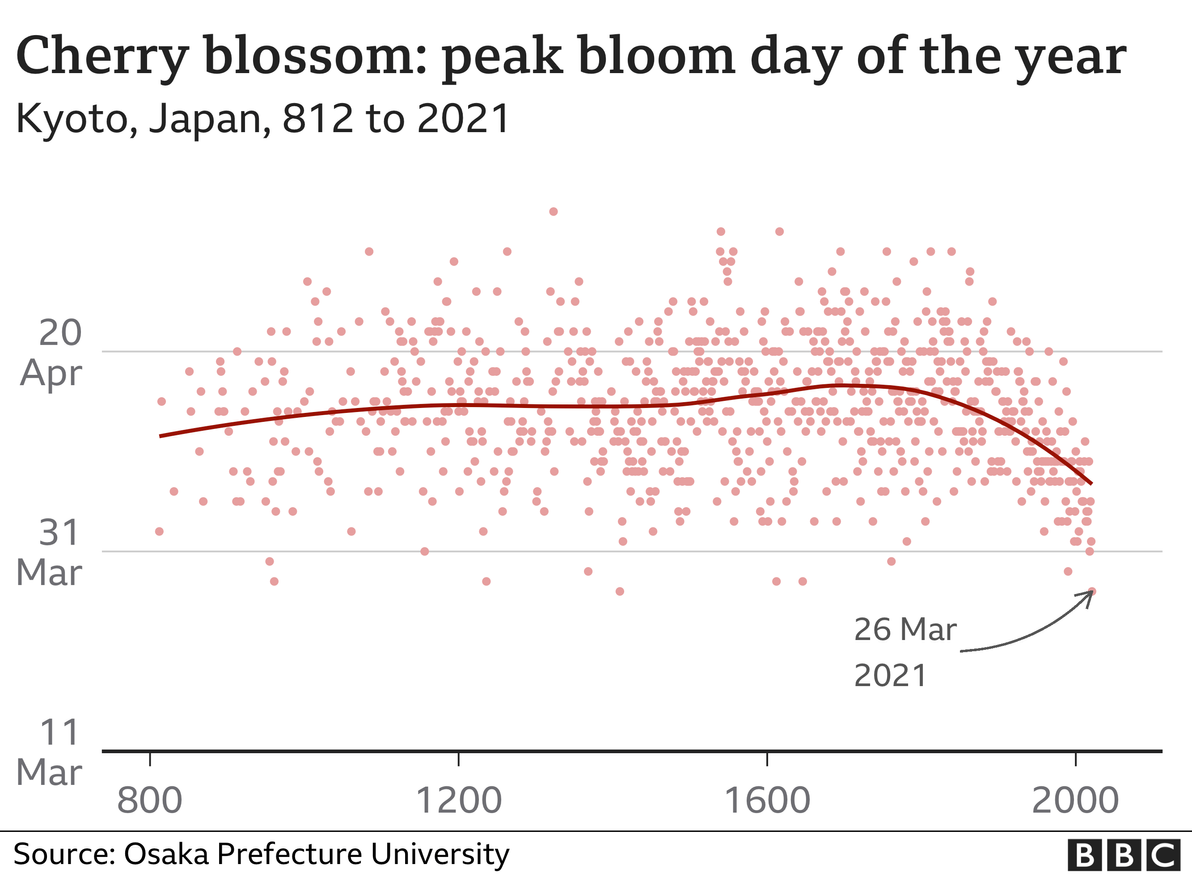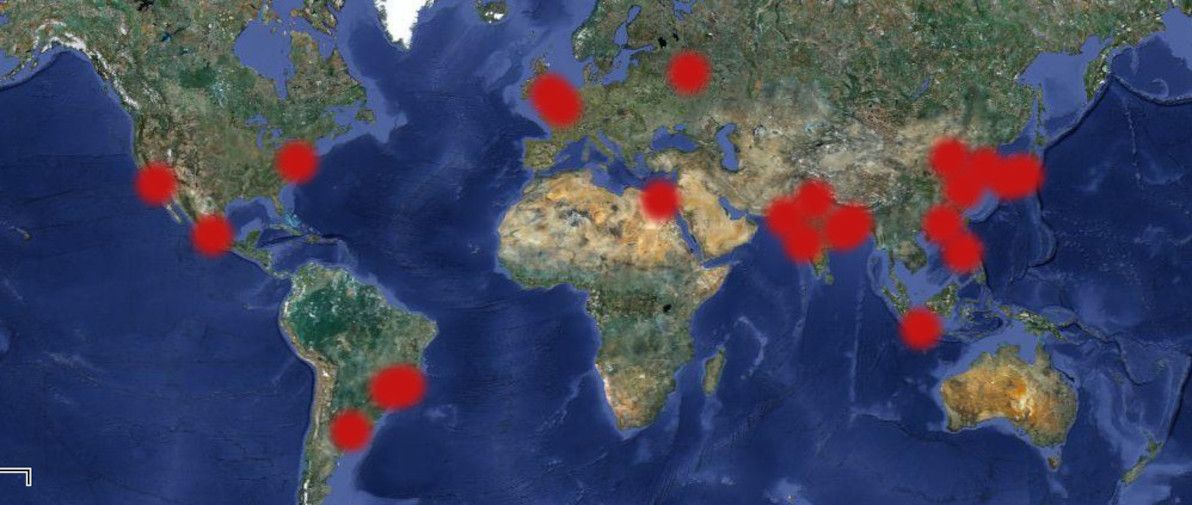I have also made the casual observation, over the last three years, that Morrison makes few appearances on Aunty in general, compared with the commercial alternatives, particularly Sky News (which I personally have never watched directly, and have no plans to, but I've seen plenty of clips of Morrison on Sky repeated on the ABC and elsewhere).
This led me to do some research, to find out: how often has Morrison taken part in ABC interviews, during his tenure so far as Prime Minister, compared with his predecessors? I compiled my findings, and this is what they show:

It's official: Morrison has, on average, taken part in fewer ABC TV and Radio interviews, than any other Prime Minister in recent Australian history.
I hope you find my humble dataset useful. Apart from illustrating Morrison's disdain for the ABC, there are also tonnes of other interesting analyses that could be performed on the data, and tonnes of other conclusions that could be drawn from it.
My findings are hardly surprising, considering Morrison's flagrant preference for sensationalism, spin, and the far-right fringe. I leave it as an exercise to the reader, to draw from my dataset what conclusions you will, regarding the fate of the already Coalition-scarred ABC, should Morrison win a second term.
Update, 18 May 2022: check it out, this article has been re-published on Independent Australia!
]]>
Image source: BBC News
I just want to briefly dive in to the data set (and the academic research behind it), and to explain why, in my opinion, it's such a gem in the sea of modern-day climate science.
Can we trust this data?
Green-minded lefties (of whom I count myself one) would tend to trust this data, without feeling the need to dig any deeper into where it came from, nor into how it got collated. However, putting myself in the shoes of a climate change sceptic, I can imagine that there are plenty of people out there who'd demand the full story, before being willing to digest the data, let alone to accept any conclusions arising from it. And hey, regardless of your political or other leanings, it's a good idea for everyone to conduct some due diligence background research, and to not blindly be believin' (especially not anything that you read online, because I hate to break it to you, but not everything on the internet is true!).

Image source: me.me
When I first saw the above graph – of the cherry blossom dates over 1,200 years – in the mainstream media, I assumed that the data points all came from a nice, single, clean, consistent source. Like, you know, a single giant tome, a "cherry blossom codex", that one wizened dude in each generation has been adding a line to, once a year, every year since 812 CE, noting down the date. But even the Japanese aren't quite that meticulous. The real world is messy!
According to the introductory text on the page from Osaka Prefecture University, the pre-modern data points – defined as being from 812 CE to 1880 – were collected:
… from many diaries and chronicles written by Emperors, aristocrats, goveners and monks at Kyoto …
For every data point, the source is listed. Many of the sources yield little or no results in a Google search. For example, try searching (including quotes) for "Yoshidake Hinamiki" (the source for the data points from 1402 and 1403), for which the only results are a handful of academic papers and books in which it's cited, and nothing actually explaining what it is, nor showing more than a few lines of the original text.
Or try searching for "Inryogen Nichiroku" (the source for various data points between 1438 and 1490), which has even fewer results: just the cherry blossom data in question, nothing else! I'm assuming that information about these sources is so limited, mainly due to there being virtually no English-language resources about them, and/or due to the actual titles of the sources having no standard for correct English transliteration. I'm afraid that, since my knowledge of Japanese is close to zilch, I'm unable to search for anything much online in Japanese, let alone for information about esoteric centuries-old texts.
The listed source for the very first data point of 812 CE is the Nihon Kōki. That book, along with the other five books that comprise the Rikkokushi – and all of which are compiled in the Ruijū Kokushi – appears to be one of the more famous sources. It was officially commissioned by the Emperor, and was authored by several statesmen of the imperial court. It appears to be generally considered as a reliable source of information about life in 8th and 9th century Japan.

Image source: Wikimedia Commons
The data points from 812 CE to 1400 are somewhat sporadic. There are numerous gaps, sometimes of as much as 20 years. Nevertheless, considering the large time scale under study, the data for that period is (in my unqualified layman's opinion) of high enough frequency for it to be statistically useful. The data points from 1400 onwards are more contiguous (i.e. there are far fewer gaps), so there appears to have been a fairly consistent and systematic record-keeping regime in place since then.
How much you want to trust the pre-modern data really depends, I guess, on what your opinion of Japanese civilisation is. When considering that matter, bear in mind that the Imperial House of Japan is believed to be the oldest continuous monarchy in the world, and that going back as far as the 8th century, Japan was already notable for its written works. Personally, I'd be willing to give millenium-old Japanese texts the benefit of the doubt in terms of their accuracy, more than I'd be willing to do so for texts from most other parts of the world from that era.
The man behind this data set, Yasuyuki Aono, is an Associate Professor in Environmental Sciences and Technology at Osaka Prefecture University (not a world-class university, but apparently it's roughly one of the top 20 universities in Japan). He has published numerous articles over his 30+ year career. His 2008 paper: Phenological data series of cherry tree flowering in Kyoto, Japan, and its application to reconstruction of springtime temperatures since the 9th century – the paper which is the primary source of much of the data set – is his seminal work, having been cited over 250 times to date.
So, the data set, the historical sources, and the academic credentials, all have some warts. But, in my opinion, those warts really are on the small side. It seems to me like pretty solid research. And it appears to have all been quite thoroughly peer reviewed, over numerous publications, in numerous different journals, by numerous authors, over many years. You can and should draw your own conclusions, but personally, I declare this data to be trustworthy, and I assert that anyone who doubts its trustworthiness (after conducting an equivalent level of background research to mine) is splitting hairs.
It don't get much simpler
Having got that due diligence out of the way, I hope that even any climate change sceptics out there who happen to have read this far (assuming that any such folk should ever care to read an article like this on a web site like mine) are willing to admit: this cherry blossom data is telling us something!
I was originally hoping to give this article a title that went something like: "Five indisputable bits of climate change evidence". That is, I was hoping to find four or so other bits of evidence as good as this one. But I couldn't! As far as I can tell, there's no other record of any other natural phenomenon on this Earth (climate change related or otherwise), that has been consistently recorded, in writing, more-or-less annually, for the past 1,000+ years. So I had to scrap that title, and just focus on the cherry blossoms.

Image source: Wikimedia Commons
Apart from the sheer length of the time span, the other thing that makes this such a gem, is the fact that the data in question is so simple. It's just the date of when people saw their favourite flower bloom each year! It's pretty hard to record it wrongly – even a thousand years ago, I think people knew what day of the year it was. It's not like temperature, or any other non-discrete value, that has to be carefully measured, by trained experts, using sensitive calibrated instruments. Any old doofus can write today's date, and get it right. It's not rocket science!
That's why I really am excited about this cherry blossom data being the most indisputable evidence of climate change ever. It's not going back 200 years, it's going back 1,200 years. It's not projected data, it's actual data. It's not measured, it's observed. And it was pretty steady for a whole millenium, before taking a noticeable nosedive in the 20th century. If this doesn't convince you that man-made climate change is real, then you, my friend, have well and truly buried your head in the sand.
]]>Note: all population statistics are the latest numbers on relevant country- or city-level Wikipedia pages, as of writing, and all are for the cities' metropolitan area or closest available equivalent. The list is presented in alphabetical order by country.
Australia: Sydney and Melbourne

Image sources: Visit NSW, Tourism Australia.
As all my fellow Aussies can attest, Sydney (pop: 4.9m) and Melbourne (pop: 4.5m) well and truly deserve to be at the top of this list. Arguably, no other two cities in the world are such closely-matched rivals. As well as their similarity in population size and economic prowess, Sydney and Melbourne have also been ruthlessly competing for cultural, political and touristic dominance, for most of Australia's (admittedly short) history.
Both cities have hosted the Summer Olympics (Melbourne in 1956, Sydney in 2000). Sydney narrowly leads in population and economic terms, but Melbourne proudly boasts being "the cultural capital of Australia". The national capital, Canberra, was built roughly halfway between Sydney and Melbourne, precisely because the two cities couldn't agree on which one should be the capital.
China: Shanghai and Beijing

Image sources: Gensler Design, MapQuest.
In the world's most populous country, the port city Shanghai (pop: 24.5m) and the capital Beijing (pop: 21.1m) compete to be Number One. These days, Shanghai is marginally winning on the population and economic fronts, but Beijing undoubtedly takes the lead in the political, cultural and historic spheres.
It should also be noted that China's third-most populous city, Guangzhou (pop: 20.8m), and its (arguably) fourth-most populous city, Shenzhen (pop: 18m), are close runners-up to Shanghai and Beijing in population and economic terms. The neighbouring cities of Guangzhou and Shenzhen, together with other adjacent towns and cities, make up what is now the world's most populous urban area, the Pearl River Delta Megacity. This area has a population of 44m, which can even jump to 54m if the nearby islands of Hong Kong are included.
Ecuador: Guayaquil and Quito

Image sources: Grand Hotel Guayaquil, Lonely Planet.
Ecuador's port city Guayaquil (pop: 5.0m) and its capital Quito (pop: 4.2m) are the only pair of cities from Latin America to feature on the list. Most Latin American countries are well and truly dominated by one big urban area. In Ecuador, Guayaquil is the economic powerhouse, while Quito is the nation's political and cultural heart.
Germany: Berlin and Hamburg

Image sources: Slate, Educational Geography.
The urban areas of the capital Berlin (pop: 6.0m) and the port city Hamburg (pop: 5.1m) are (arguably) the two largest in the Bundesrepublik Deutschland. These cities vie closely for economic muscle, and both are also rich historic and cultural centres of Germany.
However, Germany is truly one of the most balanced countries in the world, in terms of having numerous cities that contend for being the top population and economic centre of the land. There are also Munich (pop: 4.5m) and Stuttgart (pop: 4.0m), the southernmost of the nation's big cities. Plus there are the "urban mega-regions" of the Ruhr (pop: 8.5m), and Frankfurt Rhine-Main (pop: 5.8m), which are too spread-out to be considered single metropolitan areas (and which lack a single metro area with the large population of the big cities), but which are key centres nonetheless. Unsurprisingly, the very geographical layout of the nation's cities are yet another testament to German planning and efficiency.
Italy: Rome and Milan

Image sources: Amalfi Coast Destination, I Like Going Out.
In La Bella Italia, Rome (pop: 4.3m) and Milan (pop: 4.2m) are the two most populous cities by a fair stretch. With its formidable fashion and finance industries (among many others), Milan is quite clearly the top economic centre of Italy.
In terms of culture, few other pairs of cities can boast such a grand and glorious rivalry as that of Rome and Milan. Naturally, with its Roman Empire legacy, and as the home of the Vatican (making Rome virtually unique globally in being a city with another country inside it!), Rome wins hands-down on the historical, political and touristic fronts. But in terms of art, cuisine, and media (to name a few), Milan packs a good punch. However, most everywhere in Italy pulls ahead of its weight in those areas, including the next-largest urban areas of Naples, Turin, Venice and Florence.
India: Delhi and Mumbai

Image sources: Swaminarayan Akshardham New Delhi, FSSAI Consultants in Mumbai.
In the world's second-most-populous country, the mega-cities of Delhi (pop: 21.8m) and Mumbai (pop: 20.8m) compete for people, business, and chaos. Delhi takes the cake politically, culturally, historically, and (as I can attest from personal experience) chaotically. Mumbai, a much newer city – only really having come into existence since the days of the British Raj – is the winner economically.
The next most populous cities of India – Kolkata, Bangalore, and Chennai – are also massive population centres in their own right, and they're not far behind Delhi and Mumbai in terms of national importance.
South Africa: Johannesburg and Cape Town

Image sources: Awesome Work and Travel, Cape Town International Airport.
South Africa is the only African nation to make this list. Its two chief cities are the sprawling metropolis of Johannesburg (pop: 4.4m), and the picturesque port city of Cape Town (pop: 3.7m). Johannesburg is not only the economic powerhouse of South Africa, but indeed of all Africa. Cape Town, on the other hand, is the historic centre of the land, and with the sea hugging its shores and the distinctive Table Mountain looming big behind, it's also a place of great natural beauty.
Spain: Madrid and Barcelona

Image sources: Wall Street Journal, Happy People Barcelona.
El Reino de España is dominated by the two big cities of Madrid (pop: 6.3m) and Barcelona (pop: 5.4m). Few other pairs of cities in the world fight so bitterly for economic and cultural superiority, and on those fronts, in Spain there is no clear winner. Having spent much of its history as the head of its own independent kingdom of Catalonia, Barcelona has a rich culture of its own. And while Madrid is the political capital of modern Spain, Barcelona is considered the more modern metropolis, and has established itself as the "cosmopolitan capital" of the land.
Madrid and Barcelona are not the only twin cities in this list where different languages are spoken, and where historically the cities were part of different nations or kingdoms. However, they are the only ones where open hostility exists and is a major issue to this day: a large faction within Catalonia (including within Barcelona) is engaged in an ongoing struggle to secede from Spain, and the animosity resulting from this struggle is both real and unfortunate.
United States: New York and Los Angeles

Image sources: Short Term Rentals NYC, Megalopolis Now.
The two biggest urban areas in Uncle Sam, New York (pop: 23.7m) and Los Angeles (pop: 18.7m), differ in many ways apart from just being on opposite coasts. Both are economic and cultural powerhouses: NYC with its high finance and its music / theatre prowess; LA with Hollywood and show biz. The City That Never Sleeps likes to think of itself as the beating heart of the USA (and indeed the world!), while the City of Angels doesn't take itself too seriously, in true California style.
These are the two biggest, but they are by no means the only big boys in town. The nation's next-biggest urban areas – Chicago, Washington-Baltimore, San Francisco Bay Area, Boston, Dallas, Philadelphia, Houston, Miami, and Atlanta (all with populations between 6m and 10m) – are spread out all across the continental United States, and they're all vibrant cities and key economic hubs.
Vietnam: Ho Chi Minh and Hanoi

Image sources: Pullman Hotels, Lonely Planet.
Finally, in the long and thin nation of Vietnam, the two river delta cities of Ho Chi Minh (pop: 8.2m) in the south, and Hanoi (pop: 7.6m) in the north, have for a long time been the country's key twin hubs. During the Vietnam War, these cities became the respective national capitals of the independent Democratic South and Communist North Vietnam; but these days, Vietnam is well and truly unified, and north and south fly under the same flag.
Conclusion
That's it, my non-authoritative list of rival top cities in various countries around the world. I originally included more pairs of cities in the list, but I culled it down to only include cities that were very closely matched in population size. Numerous other contenders for this list consist of a City A that's bigger, and a City B that's smaller but is more famous or more historic than its twin. Anyway, hope you like my selection, feedback welcome.
Crossed swords image source: openclipart.
]]>This article is a listing and an analysis of the world's largest cities (those with a population exceeding 10 million), and of their natural disaster risk level in a variety of categories. My list includes 23 cities, which represent a combined population of approximately 380 million people. That's roughly 5% of the world's population. Listing and population figures based on Wikipedia's list of metropolitan areas by population.

The list
| City | Country | Population (millions) | Natural disaster risks |
|---|---|---|---|
| Tokyo | Japan | 32.45
|
Summary: very well-prepared for high risk of flooding, storms, and earthquakes. |
| Seoul | Korea | 25.62
|
Summary: could be better prepared for high risk of flooding and storms. |
| Jakarta | Indonesia | 23.31
|
Summary: critically unprepared for high risk of flooding and storms. |
| Delhi | India | 21.75
|
Summary: critically unprepared for high risk of flooding, storms, and drought. |
| Mumbai | India | 20.75
|
Summary: critically unprepared for high risk of flooding, storms, and drought. |
| Mexico City | Mexico | 20.45
|
Summary: could be better prepared for high risk of flooding, earthquakes, and drought. |
| São Paulo | Brazil | 19.95
|
Summary: could be better prepared for high risk of flooding. |
| New York | United States | 19.75
|
Summary: could be better prepared for high risk of flooding and storms. |
| Osaka | Japan | 17.38
|
Summary: very well-prepared for high risk of flooding, storms, and earthquakes. |
| Shanghai | China | 16.65
|
Summary: critically unprepared for high risk of flooding and storms. |
| Manila | Philippines | 16.30
|
Summary: critically unprepared for high risk of flooding and storms. |
| Hong Kong-Shenzhen | China | 15.80
|
Summary: very well-prepared for high risk of storms. |
| Los Angeles | United States | 15.25
|
Summary: could be better prepared for high risk of fire, earthquake, and drought. |
| Kolkata | India | 15.10
|
Summary: critically unprepared for high risk of flooding and storms. |
| London | United Kingdom | 15.01
|
Summary: could be better prepared for high risk of flooding. |
| Moscow | Russia | 15.00
|
Summary: no high risks in area. |
| Cairo | Egypt | 14.45
|
Summary: could be better prepared for high risk of drought. |
| Buenos Aires | Argentina | 13.17
|
Summary: could be better prepared for high risk of flooding. |
| Dhaka | Bangladesh | 12.80
|
Summary: critically unprepared for high risk of flooding, storms, and drought. |
| Beijing | China | 12.50
|
Summary: critically unprepared for high risk of flooding and storms. |
| Karachi | Pakistan | 11.80
|
Summary: critically unprepared for high risk of flooding, storms, and drought. |
| Rio de Janeiro | Brazil | 11.85
|
Summary: could be better prepared for high risk of flooding. |
| Paris | France | 10.42
|
Summary: could be better prepared for high risk of flooding. |
Notes:
- Flood refers to risk of the metropolitan area itself becoming inundated with water.
- Storm refers to risk of disaster storms (as opposed to regular storms), which are variously called "hurricanes", "cyclones", "monsoons", "typhoons", and other names (depending on region / climate).
- Fire refers to risk of wildfire / bushfire (as opposed to urban fire) from forest or wilderness areas surrounding or within the metropolitan area.
- Earthquake refers to risk of the metropolitan area itself being shaken by seismic activity.
- Tsunami refers to risk of a seismically-trigged ocean wave hitting the metropolitan area itself.
- Drought refers to risk of drought affecting the agricultural region in which the metropolitan area lies.
Analysis
The list above presents quite the sobering picture: of the 23 cities analysed, 9 are critically unprepared for one or more high risks; 10 could be better prepared for one or more high risks; and only 4 are well-prepared for high risks (of which there's one that has no high risks). All in all, the majority of the inhabitants of the world's largest cities live with a signficant risk of natural disaster, for which the city is not sufficiently well-prepared.
By far the most common natural disaster plaguing the list is flooding: it affects 19 of the 23 cities (with many of these cities also at risk from storms). This is understandable, since the majority of the world's large cities are situated on the coast. 15 of the 23 cities in the list are on or very near to the seashore. What's more, about half of the 23 cities are also on or very near to a river delta, with several of them being considered "mega-delta cities" – that is, cities whose metropolitan area lies within a flood-plain.
With the methodology I've used in this analysis, it doesn't really matter what the risk of a given natural disaster striking a city is; what's significant, is how prepared a given city is to handle its most high-risk disasters. After all, if a city is very well-prepared for a high risk, then a large part of the risk effectively cancels itself out (although the risk that remains is still significant, as some cities are at risk of truly monumental disasters for which one can never fully prepare). On the other hand, if a city is critically unprepared for a high risk, this means that really there are no mitigating factors – that city will suffer tremendously when disaster hits.
It should come as no surprise, therefore, that the summary / risk level for each city depends heavily on that country's level of development. For example, the Japanese cities are some of the most disaster-prone cities in the world; but they're also safer than numerous other, less disaster-prone cities, because of Japan's incredibly high level of preparedness for natural disasters (in particular, its world-class earthquake-proof building standards, and its formidable flood-control infrastructure). At the other extreme, the Indian cities are significantly less disaster-prone than many others (in particular, India has a low earthquake risk); but they're more dangerous, due to India's poor overall urban infrastructure, and its poor or non-existent flood-control infrastructure.
Conclusion
So: if you're picking one of the world's largest cities to live in, which would be a good choice? From the list above, the clear winner is Moscow, which is the only city with no high risk of any of the world's more common natural disasters. However, it does get pretty chilly there (Moscow has the highest latitude of all the cities in the list), and Russia has plenty of other issues aside from natural disasters.
The other cities in my list with a tick of approval are the Japanese mega-cities, Tokyo and Osaka. Although Japan is one of the most earthquake-prone places on Earth, you can count on the Japanese for being about 500 years ahead of the rest of the world earthquake-proof-wise, as they are about 500 years ahead of the rest of the world technology-wise in general. Hong Kong would also be a good choice, in picking a city very well-prepared for the natural disasters that it most commonly faces.
For all of you that are living in the other mega-cities of the developed world: watch out, because you're all living in cities that could be better prepared for natural disasters. I'm looking at you Seoul, New York, Los Angeles, London, and Paris. Likewise to the cities on the list in somewhat less-developed countries: i.e. Mexico City, São Paulo, Cairo, Buenos Aires, and Rio de Janeiro. You're all lagging behind in natural disaster risk management.
As for the cities on my list that are "in the red": you should seriously consider other alternatives, before choosing to live in any of these places. The developing nations of Indonesia, India, China, The Philippines, Bangladesh, and Pakistan are home to world mega-cities; however, their population bears (and, in many cases, regularly suffers) a critical level of exposure to natural disaster risk. Jakarta, Delhi, Mumbai, Shanghai, Manila, Kolkata, Dhaka, Beijing, and Karachi: thinking of living in any of these? Think again.
Additional References
- Listverse: Top 10 Most Terrifying Natural Disasters in History
- IRIN News: Asia: Cities at risk
- PreventionWeb: Maps
- PreventionWeb: Global Flood Hazard Distribution Map
- PreventionWeb: Global Risks Index 2012
- PreventionWeb: Natural Disasters Risk Index 2010
- PreventionWeb: Sketch of global tsunami hazard
- PreventionWeb: Global Earthquake (PGA) Hazard Distribution
- PreventionWeb: Global Drought Hazard Distribution
- The New York Times: Where to Live to Avoid a Natural Disaster
- io9: A Map of the World That Reveals Natural Disaster Hot Zones
- Pledging for Change: Top 5 Worst Places in the World to Live for Natural Disasters
- OPEFS: World Fire Map
I spent a bit of time recently, hunting for sets of data that could answer these questions in an expansive and meaningful way. And I'm optimistic that what I've come up with satisfies both of those things: in terms of expansive, I've got stats (admittedly of varying quality) for most of the film-watching world; and in terms of meaningful, I'm using box office admission numbers, which I believe are the most reliable international measure of film popularity.
So, without further ado, here are the stats that I've come up with:
| Country | Admissions (millions) | US admissions (percent of total) | EU admissions (percent of total) | Local admissions (percent of total) | Other admissions (percent remainder) |
|---|---|---|---|---|---|
| India |
2,900.0
|
6.0%
|
0.8%
|
92.0%
|
1.2%
|
| US |
1,364.0
|
91.5%
|
7.2%
|
n/a
|
1.3%
|
| China |
217.8
|
38.0%
|
4.0%
|
56.6%
|
1.4%
|
| France |
200.9
|
49.8%
|
50.2%
|
n/a
|
0.0%
|
| Mexico |
178.0
|
90.0%
|
1.0%
|
7.5%
|
1.5%
|
| UK |
173.5
|
77.0%
|
21.5%
|
n/a
|
1.5%
|
| Japan |
169.3
|
38.0%
|
2.0%
|
56.9%
|
1.5%
|
| South Korea |
156.8
|
46.0%
|
2.5%
|
48.8%
|
2.7%
|
| Germany |
146.3
|
65.0%
|
34.4%
|
n/a
|
0.6%
|
| Russia & CIS |
138.5
|
60.0%
|
12.0%
|
23.9%
|
4.1%
|
| Brazil |
112.7
|
75.0%
|
10.0%
|
14.3%
|
0.7%
|
| Italy |
111.2
|
64.0%
|
29.4%
|
n/a
|
6.6%
|
| Spain |
109.5
|
65.0%
|
32.0%
|
n/a
|
3.0%
|
| Canada |
108.0
|
88.5%
|
8.0%
|
2.8%
|
0.7%
|
| Australia |
90.7
|
84.2%
|
10.0%
|
5.0%
|
0.8%
|
| Philippines |
65.4
|
80.0%
|
4.0%
|
15.0%
|
1.0%
|
| Indonesia |
50.1
|
80.0%
|
4.0%
|
15.0%
|
1.0%
|
| Malaysia |
44.1
|
82.0%
|
4.0%
|
13.7%
|
0.3%
|
| Poland |
39.2
|
70.0%
|
29.5%
|
n/a
|
0.5%
|
| Turkey |
36.9
|
42.0%
|
6.0%
|
50.9%
|
1.1%
|
| Argentina |
33.3
|
76.0%
|
7.0%
|
16.0%
|
1.0%
|
| Netherlands |
27.3
|
65.0%
|
33.4%
|
n/a
|
1.6%
|
| Colombia |
27.3
|
82.0%
|
10.0%
|
4.8%
|
3.2%
|
| Thailand |
27.1
|
60.0%
|
1.0%
|
37.5%
|
1.5%
|
| South Africa |
26.1
|
72.0%
|
10.0%
|
15.0%
|
3.0%
|
| Egypt |
25.6
|
16.0%
|
2.0%
|
80.0%
|
2.0%
|
| Taiwan |
23.6
|
75.0%
|
2.0%
|
22.3%
|
0.7%
|
| Belgium |
22.6
|
60.0%
|
37.9%
|
n/a
|
2.1%
|
| Singapore |
22.0
|
90.0%
|
3.0%
|
3.8%
|
3.2%
|
| Venezuela |
22.0
|
90.0%
|
6.0%
|
0.6%
|
3.4%
|
| Hong Kong |
20.1
|
70.0%
|
3.0%
|
21.0%
|
6.0%
|
Note: this table lists all countries with annual box office admissions of more than 20 million tickets sold. The countries are listed in descending order of number of box office admissions. The primary source for the data in this table (and for this article in general), is the 2010 edition of the FOCUS: World Film Market Trends report, published by the European Audiovisual Observatory.
The Mighty Hollywood
Before I comment on anything else, I must make the point loudly and clearly: Hollywood is still the most significant cinema force in the world, as it has consistently been since the dawn of movie-making over a century ago. There can be no denying that. By every worldwide cinema-going measure, movies from the United States are still No. 1: quantity of box office tickets sold; gross box office profit; and extent of geopolitical box office distribution.
The main purpose of this article, is to present the cinema movements around the world that are competing with Hollywood, and to demonstrate that some of those movements are significant potential competition for Hollywood. I may, at times in this article, tend to exaggerate the capacity of these regional players. If I do, then please forgive me, and please just remind yourself of the cold, harsh reality, that when Hollywood farts, the world takes more notice than when Hollywood's contenders discover life on Mars.
Seriously, Hollywood is mighty
Having made my above point, let's now move on, and have a look at the actual stats that show just how frikkin' invincible the USA's film industry is today:
- The global distribution of US movies is massive: of the 31 countries listed in the table above, 24 see more than 50% of their box office admissions being for US movies.
- The US domestic cinema industry is easily the most profitable in the world, raking in more than US$9 billion annually; and also the most extensive in the world, with almost 40,000 cinema screens across the country (2009 stats).
- The US film industry is easily the most profitable in the world: of the 20 top films worldwide by gross box office, all of them are at least partly Hollywood-produced; and of those, 13 are 100% Hollywood-produced.
Cinéma Européen
In terms of global distribution, and hence also in terms of global social and cultural impact, European movies quite clearly take the lead, after Hollywood (of course). That's why, in the table above, the only two film industries whose per-country global box office admissions I've listed, are those of the United States and of the European Union. The global distribution power of all the other film industries is, compared to these two heavyweights, negligible.
Within the EU, by far the biggest film producer — and the most successful film distributor — is France. This is nothing new: indeed, the world's first commercial public film screening was held in Paris, in 1895, beating New York's début by a full year. Other big players are Germany, Spain, Italy, and the UK. While the majority of Joe Shmoe cinema-goers worldwide have always craved the sex, guns and rock 'n' roll of Hollywood blockbusters, there have also always been those who prefer a more cultured, refined and sophisticated cinema experience. Hence, European cinema is — while not the behemoth that is Hollywood — strong as ever.
France is the only country in Europe — or the world — where European films represent the majority of box office admissions; and even in France, they just scrape over the 50% mark, virtually tied with Hollywood admissions. In the other European countries listed in the table above (UK, Germany, Italy, Spain, Poland, Netherlands, and Belgium), EU admissions make up around 30-35% of the market, with American films taking 60-75% of the remaining share. In the rest of the world, EU admissions don't make it far over the 10% mark; although their share remains significant worldwide, with 24 of the 31 countries in the table above having 3% or more EU admissions.
Oh My Bollywood!
You may have noticed that in the table, the US is not first in the list. That's because the world's largest cinema-going market (in terms of ticket numbers, not gross profit) is not the US. It's India. Over the past several decades, Bollywood has risen substantially, to become the second-most important film industry in the world (i.e. it's arguably more important than the European industry).
India has over 1.2 billion people, giving it the second-largest population in the world (after China). However, Indians love cinema much more than the Chinese do. India has for quite some time been the world's No. 1 producer of feature films. And with 2.9 billion box office admissions annually, the raw cinema-going numbers for India are more than double those of the US, which follows second worldwide.
Apart from being No. 1 in domestic box office admissions, India also has the highest percentage of admissions for local films, and the lowest percentage of admissions for US films, in the world. That means that when Indians go to the cinema, they watch more local movies, and less American movies, than any other people in the world (exactly what the social and cultural implications of that are, I leave for another discussion — perhaps better analysed in a PhD thesis than in a blog post!). That also gives Bollywood the No. 2 spot for international box office admissions.
However, massive as Bollywood's presence and its influence is domestically within India (and in the rest of South Asia), its global reach is pretty slim. Bollywood's No. 2 spot for international box office admissions, stems 99% from its domestic admissions. The vast majority of Bollywood movies are never even shipped outside of the region, let alone screened in cinemas. A significant number are also filmed in the Hindi language, and are never dubbed or subtitled in English (or any other languages), due to lack of an international market.
There are some exceptions. For example, a number of Bollywood films are distributed and screened in cinemas in the UK, targeting the large Indian community there (the number of films is relatively small compared to the size of the Bollywood industry, but it's a significant number within the UK cinema market). However, despite its growing international fame, Bollywood remains essentially a domestic affair.
The rest of the world has yet to truly embrace the lavish psychedelic costumes; the maximum interval of six minutes between twenty-minute-long, spontaneous, hip-swinging, sari-swirling song-and-dance routines; or the idea that the plot of every movie should involve a poor guy falling in love with a rich girl whose parents refuse for them to marry (oh, and of course there must also be a wedding, and it must be the most important and extravagent scene of the movie). Bollywood — what's not to love?
Nollywood, anyone?
We're all familiar with Bollywood… but have you heard of Nollywood? It's the film industry of Nigeria. And, in case you didn't know, in the past decade or so Nollywood has exploded from quite humble beginnings, into a movement of epic proportions and of astounding success. In 2009, Nollywood rose up to become the No. 2 producer of feature films in the world (second only to the Indian industry, and pushing Hollywood down to third place).
However, you may have noticed that Nigeria isn't in the table above at all. That's because cinema screens in Nigeria are few and far between, and almost all Nollywood films are released straight to home media (formerly VHS, these days DVD). So, Nollywood is an exceptional case study here, because the focus of this article is to measure the success of film industries by box office admissions; and yet Nollywood, which has rapidly become one of the most successful film industries in the world, lacks almost any box office admissions whatsoever.
There are few hard statistics available for distribution of films within Nigeria (or in most of the rest of Africa), in terms of box office admissions, DVD sales (with almost all being sold in ramshackle markets, and with many being pirated copies), or anything else. However, the talk of the town is that the majority of movies watched in Nigeria, and in many other countries in Africa, are local Nollywood flicks. In Nigeria itself, the proportion of local-vs-Hollywood film-watching may even be reaching Indian levels, i.e. more than 90% of viewings being of local films — although it's impossible to give any exact figures.
Nollywood's distribution reach is pretty well limited to domestic Nigeria, and the surrounding African regions. Bollywood boasts a significantly greater international distribution… and Bollywood's reach ain't amazing, either. The low-budget production and straight-to-disc distribution strategies of Nollywood have proved incredibly successful locally. However, this means that most Nollywood movies aren't even suitable for cinema projection without serious editing (in terms of technology and cinematography), and this has probably been a factor in limiting Nollywood's growth in other markets, where traditional box office distribution is critical to success.
East Asian cinema
The film industries of the Orient have always been big. In particular, the industries of China and Japan, respectively, are each only slightly behind Hollywood in number of feature films produced annually (and Korea is about on par with Italy). Many East Asian film industries enjoy considerable local success, as evidenced in the table above, where several Asian countries are listed as having a significant percentage of local box office admissions (in China, Japan and Korea, local films sweep away 50% or more of the box office admissions).
Much like Bollywood, the film industries of many East Asian countries have often fallen victim to cliché and "genre overdose". In China and Hong Kong, the genre of choice has long been martial arts, with Kung Fu movies being particularly popular. In Japan and Korea, the most famous genre traditionally has been horror, and in more recent decades (particularly in Japan), the anime genre has enjoyed colossal success.
East Asian film is arguably the dominant cultural film force within the region (i.e. dominant over Hollywood). It's also had a considerable influence on the filmmaking tradition of Hollywood, with legends such as Japan's Akira Kurosawa being cited by numerous veteran Hollywood directors, such as Martin Scorsese.
However, well-established though it is, the international distribution of East Asian films has always been fairly limited. Some exceptional films have become international blockbusters, such as the (mainly) Chinese-made Crouching Tiger, Hidden Dragon (2000). Japanese horror and anime films are distributed worldwide, but they have a cult following rather than a mainstream appreciation in Western countries. When most Westerners think of "Asian" movies, they most likely think of Jackie Chan and Bruce Lee, the majority of whose films were Hollywood productions. Additionally, the international distribution of movies from other strong East Asian film industries, such as those of Thailand and Taiwan, is almost non-existent.
Middle Eastern cinema
The most significant player in Middle Eastern cinema is Egypt, which has a long and glorious film-making tradition. The Egyptian film industry accounts for a whopping 80% of Egypt's domestic box office admissions; and, even more importantly, Egyptian films are exported to the rest of the Arabic-speaking world (i.e. to much of the rest of the Middle East), and (to some extent) to the rest of the Muslim world.
Turkey is also a cinema powerhouse within the Middle East. Turkey's film industry boasts 51% of the local box office admissions, and Turkey as a whole is the largest cinema-going market in the region. The international distribution of Turkish films is, however, somewhat more limited, due to the limited appeal of Turkish-language cinema in other countries.
Although it's not in the table above, and although limited data is available for it, Iran is the other great cinema capital of the region. Iran boasted a particularly strong film industry many decades ago, before the Islamic Revolution of 1979; nevertheless, the industry is still believed to afford significant local market share today.
Also of note is Israel, which is the most profitable cinema-going market in the region after Turkey, and which supports a surprisingly productive and successful film industry (with limited but far-reaching international distribution), given the country's small population.
Other players worldwide
- Russia & CIS. Although US box office admissions dominate these days, the Russian film industry wins almost 25% of admissions. This is very different to the Soviet days, when foreign films were banned, and only state-approved (and highly censored) films were screened in cinemas. Russian movies are mainly distributed within the former Soviet Union region, although a small number are exported to other markets.
- Latin America. The largest markets for box office admissions in the region are Mexico, Brazil, and Argentina. Admissions in all of Latin America are majority Hollywood; however, in these "big three", local industries are also still quite strong (particularly in Brazil and Argentina, each with about 15% local admissions; about half that number in more US-dominated Mexico). Local industries aren't as strong as they used to be, but they're still most definitely alive. Latin American films are distributed and screened worldwide, although their reception is limited. There have been some big hits, though, in the past decade: Mexico's Amores Perros (2000); Argentina's Nueve Reinas (2000); and Brazil's Cidade de Deus (2002).
- South Africa. Despite having a fairly large box office admission tally, there's not a whole lot of data available for local market share in the South African film industry. Nevertheless, it is a long-established film-making country, and it continues to produce a reasonable number of well-received local films every year. South Africa distributes films internationally, although generally not with blockbuster success — but there have been exceptions, e.g. Tsotsi (2005).
In summary
If you've made it this far, you must be keen! (And this article must be at least somewhat interesting). Sorry, this has turned out to be a bit longer than average for a thought article; but hey, turns out there are quite a lot of strong film industries around the world, and I didn't want to miss any important ones.
So, yes, Hollywood's reach is still universal, and its influence not in any way or in any place small. But no, Hollywood is not the only force in this world that is having a significant cultural effect, via the medium of the motion picture. There are numerous other film industries today, that are strong, and vibrant, and big. Some of them have been around for a long time, and perhaps they just never popped up on the ol' radar before (e.g. Egypt). Others are brand-new and are taking the world by storm (e.g. Nollywood).
Hollywood claims the majority of film viewings in many countries around the world, but not everywhere. Particularly, on the Indian Subcontinent (South Asia), in the Far East (China, Japan, Korea), and in much of the Middle East (Egypt, Turkey, Iran), the local film industries manage to dominate over Hollywood in this regard. Considering that those regions are some of the most populous in the world, Hollywood's influence may be significantly less than many people like to claim.
But, then again, remember what I said earlier: Hollywood farts, whole world takes notice; film-makers elsewhere discover life on Mars, doesn't even make the back page.